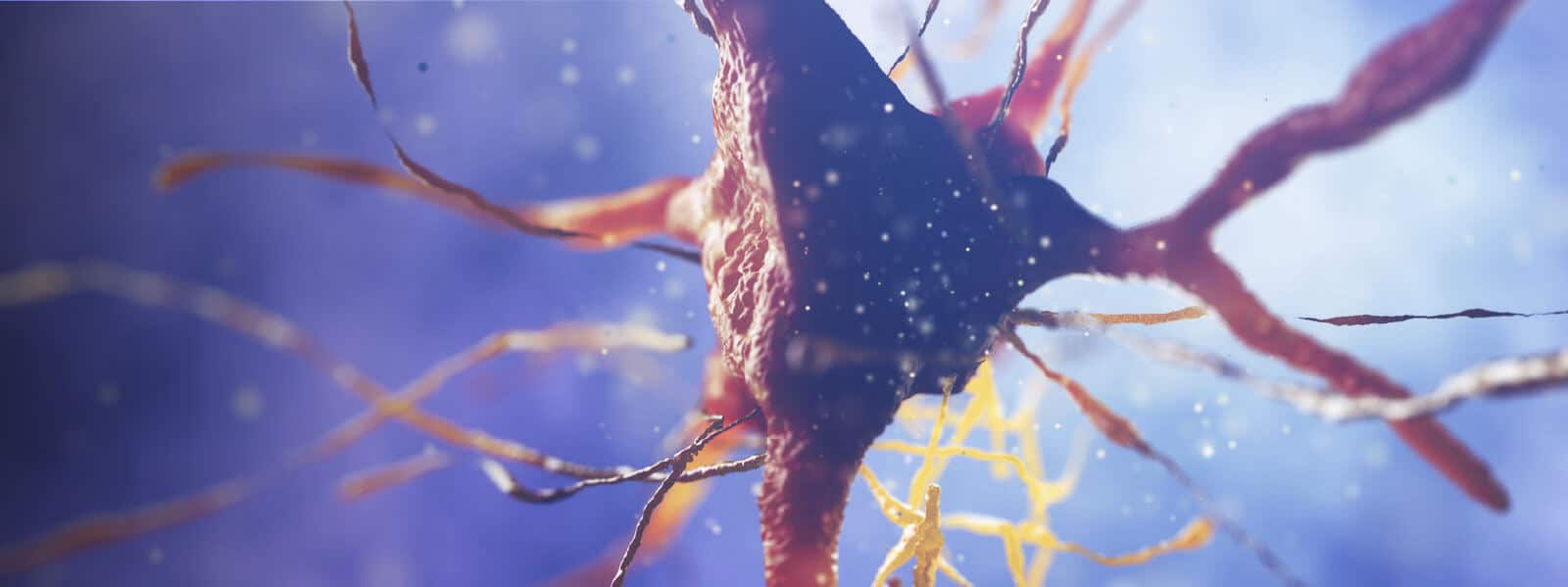
Physiology News Magazine
Invisible killers: Toxic particles and the heart
A comparative approach to understand how air pollution could harm the heart
Features
Invisible killers: Toxic particles and the heart
A comparative approach to understand how air pollution could harm the heart
Features
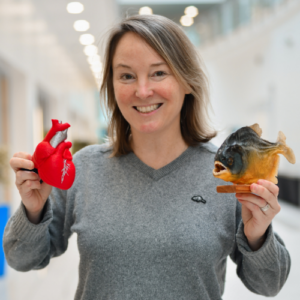
Professor Holly Shiels
Holly’s fascination with physiology and extreme environments laid its roots early in her career. As an undergraduate at Western University, Ontario, Canada she was exposed to the harsh environments of the Bay of Fundy, which has the largest tidal change in the world, while working at the Huntsman Marine Station in New Brunswick. Studying the intertidal organisms that survive huge waves and cycles of emersion and immersion drove a lifelong interest in extreme physiology and a career travelling the world to learn more about the supreme athletes and champions that live in the world’s aquatic environments. The crux of Holly’s work has been the cardiorespiratory system. She has investigated this in a dazzling array of fish, amphibians, reptiles and mammals across all life stages to better understand the extraordinary lengths and limits of animals’ physiological systems. Holly teaches Animal Physiology at the University of Manchester, is a Director of the Company of Biologists and the President of the Fisheries Society of the British Isles. In 2023 she became a Fellow Member of The Society.
It turns out that we have more in common with fish that one might have assumed. Unfortunately, that link is a shared vulnerability to fossil-fuel pollution. We asked Professor Holly Shiels to tell us more.
The world is in a precarious state; we are witnessing the shocking impact of environmental extremes and living with the rising threat of climate change and air pollution. Questions about adaptation and survival to these extremes has brought the field of comparative physiology into the mainstream. This field may once have been considered esoteric, pursued by the curiously minded exploring life’s mysteries for interest. However, the rapid rate of current environmental change perfectly positions comparative physiology to answer questions around tolerances to increasingly extreme environments. We speak to Holly Shiels, Professor of Integrative Physiology at the University of Manchester who is exploring the effects of fossil-fuel-based pollution on both fish and mammal hearts. She talks about how her findings should serve as a warning of the damaging effect that pollution is having on human hearts.
Life on the edge
Physiology helps us understand how living things work. However, comparative physiology takes our understanding a step further by helping us determine how organisms survive in their habitat. Studying extreme environments gives us clues about physiological tolerance and limits, like temperature, heat, or hypoxia, and this helps us see how far physiological systems can be pushed and tested. Speaking to Professor Holly Shiels, she explained the unique insight that comparative physiology provides, she said:
“Inherent in doing comparative physiology is looking at the diversity of ways that organisms cope with a given environmental challenge. We investigate whether organisms have the same physiological responses to a challenge, or whether there are entirely unique physiological strategies employed across species.
“As well as looking at the extremes, another advantage of comparative physiology incorporates the One Health concept. When you see consistency in physiological responses to environmental challenges across a diverse range of organisms, it reminds you that we are ‘all in it together’- simultaneously experiencing the changes that are happening to our planet. Also, if a bivalve, a fish and a human heart all respond to a factor in the same way, we have potentially found a conserved and fundamental mechanism.”
Holly’s research in cardiorespiratory physiology has led her to investigate the limits of the heart, as well as metabolism and life history traits.
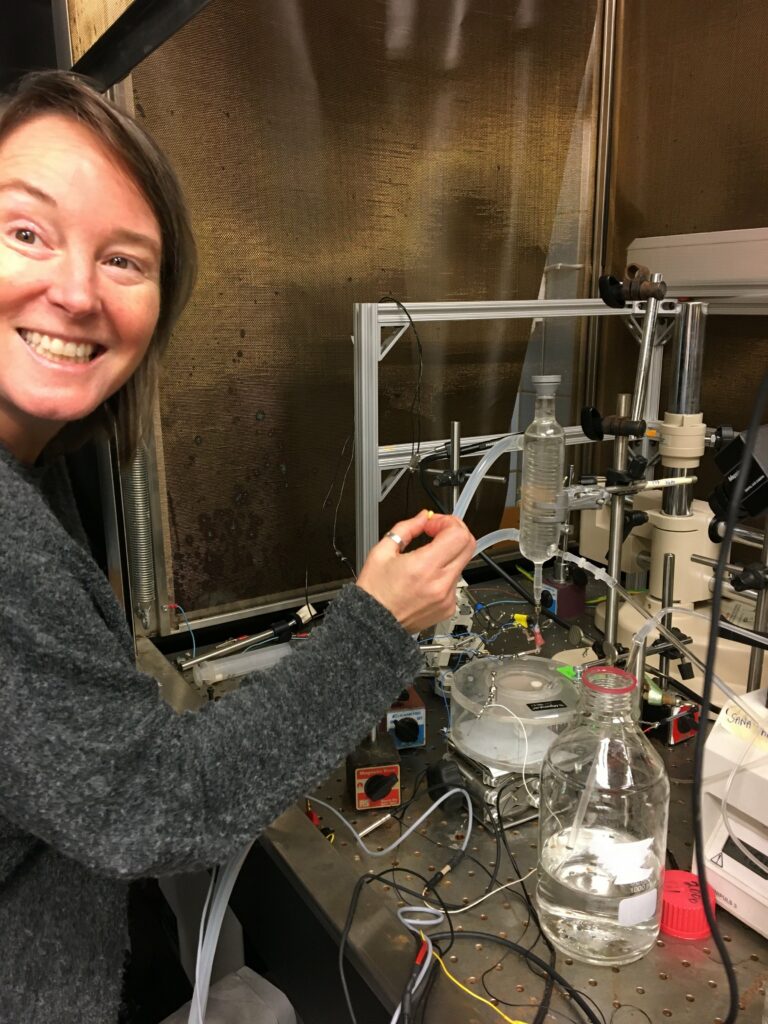
“The heart is the linchpin of survival. It is the organ that can limit or propel you, depending on the environment. For aquatic organisms, we can see this quite acutely. Their hearts are sensitive to environmental change, so when conditions exceed their optimal range, for example in scenarios such as temperature or exposure to a pollutant, we see detrimental effects at both the individual level and at the population level.”
Physiology and physiologists have a crucial role to play in responding to changing environments and exploring human tolerances. Holly’s focus on fossil-fuel pollution in fish may have a role to play in understanding human tolerances. Combustion of fossil fuels is the largest contributor to air pollution. And air pollution threatens our health and quality of life, being responsible for the premature deaths of 6.7 million people each year worldwide. An astonishing 99% of the human population are reported to be living with air quality that falls below World Health Organization guidelines. As global levels of pollution continue to rise and with more people moving to urban areas, we need to increase our knowledge of the effects of exposure to the compounds that make up air pollution.
“One chilling aspect of our research on fossil-fuel pollution is finding repeating patterns in a range of species. We have recently identified that air pollutants cause the same heart defects in fish, crayfish, and mammals. This makes you appreciate that the risk of toxicity is a widespread problem for all life on Earth.”
We have recently identified that air pollutants cause the same heart defects in fish, crayfish, and mammals. This makes you appreciate that the risk of toxicity is a widespread problem for all life on Earth
Pollution’s harmful agent
For decades, since the 1989 Exxon Valdez oil spill in Prince William Sound, Alaska that decimated the pristine environment and habitat of the plentiful wildlife, researchers have been investigating the devastating effects of fossil-fuel pollution.
Thanks to a united effort by toxicologists, physiologists and ecologists, involving many comparative studies using several different species and across a range of life stages, researchers identified a particularly harmful class of pollutants, polycyclic aromatic hydrocarbons (PAHs), which are a key component of crude oil. When oil or other fossil fuels are burned, PAHs are volatilised and exist in the gas phase or bind to the surface of small particles in the air, called particulate matter (PM).
In 2010, following the Deepwater Horizon oil spill in the Gulf of Mexico, US, Holly worked with colleagues from Standford University to investigate the pathways of PAH toxicity in fish to figure out what channels or mechanisms were being disrupted and causing the heart to malfunction.
The Deepwater Horizon oil spill was catastrophic and is considered one of the largest environmental disasters in world history. The damage was caused by an estimated 210 million gallons of crude oil spilling into the Gulf of Mexico over the course of 85 days (Deepwater Horizon Oil Spill Report, 2011). Because crude oil is a mixture of hydrocarbons, with different viscosities and densities, oil polluted the surface of the sea, as well as spreading down below the surface, even as far as the seabed. Holly and colleagues from Manchester and Stanford started investigating the cardiac responses to crude oil in the heart cells of the fish species that were swimming through the oil.
By studying the effects of the oil spill on the fish heart, they recognised that the compound phenanthrene, a low-molecular weight PAH, was the culprit responsible for cardiac dysfunction as it blocked ion channels that can lead to cardiac problems, including reduced contractility and arrhythmias (Brette et al., 2017).

Problematic hydrocarbons in the air
“I presented the results of this work at The Physiology Society meeting in Dublin. My now colleague and good friend Jules Hancox from University of Bristol was intrigued by my fishy poster. Jules realised the similarity between the mechanisms we had uncovered for how fossil-fuel pollution impacted ion channel function in the fish heart, with blockers of ion channel function in human hearts. This set us on the path researching the ubiquitous nature of the cardiotoxicity of air pollution.”
“Phenanthrene is a major component of crude oil and, worryingly, the second most abundant PAH in the polluted air that we breathe, and we knew it was cardiotoxic in fish.”
By studying the effects of phenanthrene on the mouse heart and on human induced pluripotent stem cell-derived cardiomyocytes and recombinant human ether-a-go-gorelated (hERG) channels, Holly and Jules realised that not only was phenanthrene present in the air, but it was having the same cardiotoxic response in mammalian models.
Knowing what was happening to the heart in fish allowed us to quickly understand the level of risk and human susceptibility to air pollution. It is a testament to the comparative approach!
A matter of the heart
Alarmed by the results, Holly and Jules, together with their students and postdoctoral research associates (PDRAs) supported by the British Heart Foundation, and with international support from coauthors in Russia, recently published the findings about the presence and cardiotoxicity of phenanthrene to mammals in Environmental Health Perspectives to raise awareness among public health practitioners and the wider general public.
“The problem with phenanthrene is that it can contribute to the development of arrhythmias and can block key ion channels, like hERG, the channel responsible for repolarising the heart. Repolarisation is when the electrochemical gradients of the heart’s ventricles are reset; which allows the heart muscle to relax in between beats. The hERG channel is always tested in drug research and development, and we are concerned that this direct and fairly potent hERG channel blocker (Al-Moubarak et al., 2021). If a pipeline drug demonstrated such hERG potency, it would be dropped from further development.
“We are also concerned as to how detrimental phenanthrene could be for the young, elderly or anyone living with a heart condition. Our results are based on healthy animal models and cells, so we need to understand how the heart responds in vulnerable groups to assess whether they could be at greater risk.”
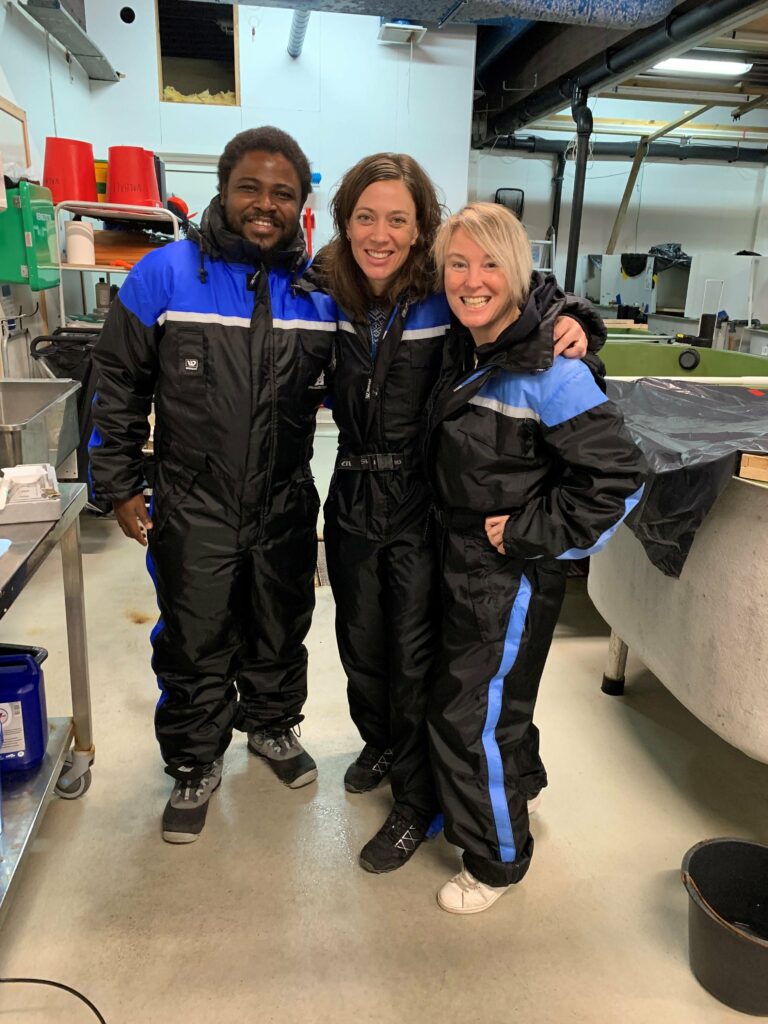
Phenanthrene inhibiting ion channels
Changes in ion channel expression are useful for studying health and disease. Using computational modelling, Holly and Jules, together with their colleagues have started to explore the nuances across species, analysing how phenanthrene could impact the electrical activity of the heart.
“There can be two different modes at play, that act together: Electrical dysfunction of the heart or contractile dysfunction of the heart. Electrical dysfunction is based mainly on potassium and sodium fluxes, while contractile function is based on calcium fluxes. Whether the response is dominated by the electrical or contractile problem, seems to be species dependent, which could be due to variable expression of the ion channels.”
Studies in sheep show calcium ion channels are relatively resistant to phenanthrene but potassium channels are inhibited. This results in electrical dysfunction of the heart. In fish, both calcium and potassium channels are inhibited, and overall fish hearts seem more sensitive.
The power of comparative physiology
The conserved mechanisms Holly and colleagues found in how the heart functions and how ion channels are inhibited across all vertebrates allowed them to act quickly.
“The vast effort by toxicologists across decades working to understand the impact of crude oil spills on fish in the aquatic environment provided the knowledge and evidence for toxicity pathways that we have rapidly applied to terrestrial species. Knowing what was happening to the heart in fish allowed us to quickly appreciate the level of risk and human susceptibility to air pollution. It is a testament to the comparative approach!”
The time is now to boost our research efforts to understand the chronic effects of air pollutants’ toxicity and the heart damage it can inflict
A warning sign that air pollution could poison our hearts
As global levels of pollution continue to rise, we need to take note of the warning signs. This means increased monitoring. Most human studies have focused on the PAH benzo(a)pyrene; this is a large-molecular weight PAH and a known carcinogen, so its levels are already monitored, though not widely, while phenanthrene-specific testing is absent. Although phenanthrene is not a strong carcinogen, its toxic impact on our heart and ion channels means we need to step up our activity.
“It is remarkable how fast we have moved from discovering the effects of this pollutant in mammals to calling for changes to public health guidelines.”
“We’re all in it together. These pollutants will affect everything and anyone interacting with their environment. It doesn’t matter whether the pollution is in the air from combusting fossil fuels or in water following an oil spill, or occurring as a result of volcanos or forest fires. Hydrocarbons bind to the surface of PM, so the pollutants are carried into our lungs, or enter our bodies via the food that we eat, like fish. And it is mostly humans who introduced these harmful particles in the environment. The time is now to boost our research efforts to understand the chronic effects of air pollutants’ toxicity and the heart damage it can inflict.”
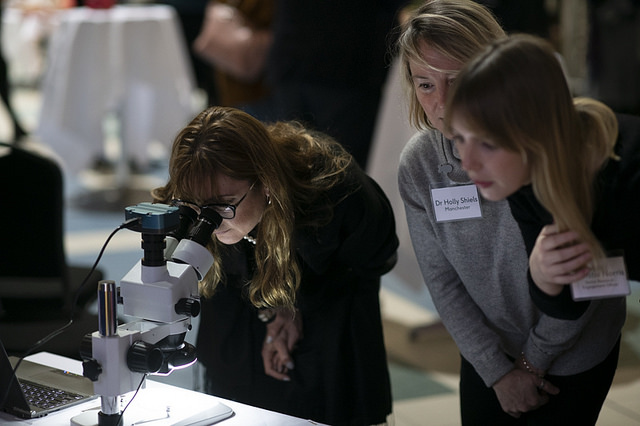
References
Al-Moubarak E et al. (2021). Inhibition of the hERG potassium channel by phenanthrene: a polycyclic aromatic hydrocarbon pollutant. Cell. Mol. Life Sci. 78, 7899–7914. https://doi.org/10.1007/s00018-021-03967-8
Brette F et al. (2017). A novel cardiotoxic mechanism for a pervasive global pollutant. Scientific Reports. 7(1): 41476. https://doi.org/10.1038/srep41476
Deepwater Horizon Oil Spill Report (2011). On scene coordinator report Deepwater Horizon Oil Spill. Available at: https://homeport.uscg.mil/Lists/Content/Attachments/119/DeepwaterHorizonReport%20-31Aug2011%20-CD_2.pdf (Accessed January 2024)
Yaar S et al. (2023). Global air pollutant phenanthrene and arrhythmic outcomes in a mouse model. Environmental Health Perspectives. 1;131(11): 117002. https://doi.org/10.1289/ehp12775
